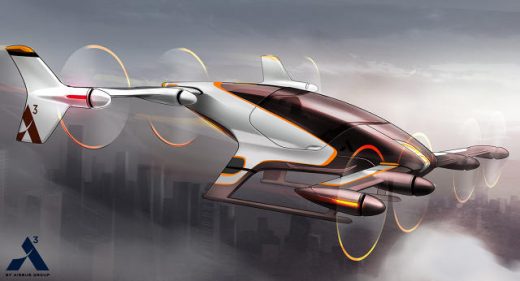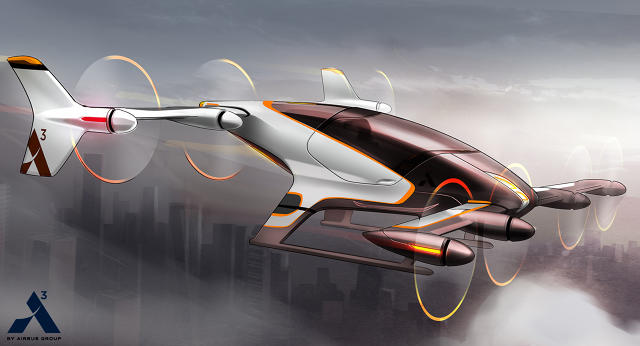Airbus Is About To Build A Self-Flying Electric Robo-Taxi
If you think self-driving cars are futuristic, imagine them flying overhead. That’s what European aerospace titan Airbus has done in designing its Vahana electric, autonomous plane, which can fly a single passenger on trips of around 50 miles, getting there about twice as fast as by car.
Airbus teased two possibilities for the Vahana on December 14: an electric helicopter and a plane with wings that tilt up to enable vertical take off and landing, or VTOL. After its engineers ran the numbers on both types, Airbus today announced that it’s building a prototype of the sci-fi looking tilt-wing plane, which will begin test flights before the end of the year. “The vehicle is being built. Parts are being made as we speak,” says Airbus chief engineer Geoffrey Bower.
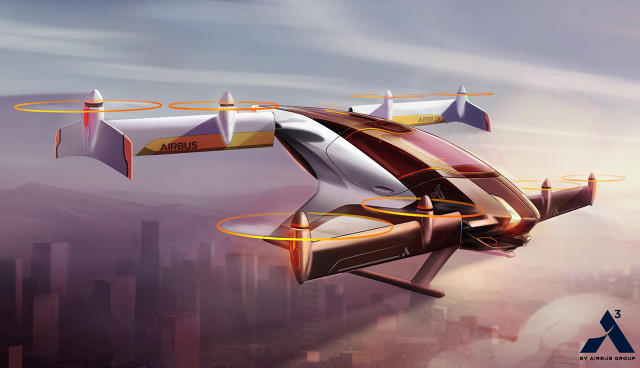
Don’t spend too much time fantasizing about your first ride in such an aircraft just yet, though. The company’s goal is to get air taxis in service in about 10 years, possibly partnering with ride-hailing companies like Uber. “We would love to see what that kind of partnership might evolve into,” says Maryanna Saenko of Airbus Ventures.
The Vahana (named for the creatures that Hindu gods ride upon) looks far different from other small planes because it has to fly straight up and down to fit tight urban landscapes without runways. It achieves that with two sets of wings—one sprouting from the craft’s nose and one from the tail—which tilt up about 90 degrees to a vertical position. The wings carry eight propellers in total, making the Vahana look like a forest of helicopters on ascent and descent. The wings rotate level for flight, providing the extra lift that lets the plane travel more than twice as far as the competing helicopter design Airbus was considering. (The Vahana will also have a parachute to bring the whole plane down gently in case of an emergency.)
“The Airbus Vahana concept is a very good approach. It’s going to work,” says Mark Moore, who heads NASA’s research on new plane technology, including electric propulsion, autonomous control, and personal craft. NASA consults with Airbus and other companies developing next-gen planes and equipment for them.
Tilt And Whirl
The tilt-wing design was always a favorite, says Bower, but it’s a new idea competing with the tried-and-true helicopter concept. “As we were doing initial [planning] of our vehicle, the question kept coming back, can a helicopter do this?” he explains. Based on Airbus’s engineering study, the chopper literally can’t go the distance. For flights beyond 70 kilometers (a little over 40 miles), the tilt-wing plane is cheaper to run. More important, the plane can travel more than twice as far as the helicopter, for the same weight and battery power.

That’s no surprise to Moore. Designwise, the Vahana is “almost exactly the same”—although much larger than—a VTOL drone called the GL-10 that NASA tested a couple of years ago. (GL stands for “greased lighting.”) NASA recently began a new program, the X-57 Maxwell, to build a full-size electric commuter plane. It’s retrofitting a gasoline-powered Tecnam P2006T twin-engine light aircraft, replacing just the wings and motors, to show the benefits of electric over gas.
Distributing a bunch of rotors that blow air across the wing produces more lift, especially at lower speeds (handy for pinpoint landings in cities) and thus allows smaller wings, which are more efficient at high speed. “The goal for us is a five times reduction in energy used at high-speed cruise condition,” says Moore of NASA’s test craft.
Based on the same concept as NASA’s planes, the Vahana should also save a lot of power. Electricity is key to that performance boost. “Internal combustion engines or turbines have heavy [drive] shafts that take power out to rotors that are distributed far away,” says Bower. That’s even more challenging for rotors or wings that pivot for vertical flight. Spacing electric motors around the aircraft—known as distributed electric propulsion—just requires running wires to them. It also helps that electric motors are two to three times more efficient than internal combustion engines, says Bower.
A Long Flight
Electric commuter planes, even autopiloted ones, aren’t a new concept. I first met NASA’s Moore in 2008 at the Electric Aircraft Symposium, a small gathering of true believers—including Google cofounder Larry Page—at a hotel near the San Francisco International Airport. Experimental craft have been built over the intervening years, and the industry gained popularity with NASA’s 2011 Green Flight Challenge to demonstrate the most energy-efficient aircraft. Google co-sponsored the event, which was organized by the CAFE (Comparative Aircraft Flight Efficiency) Foundation. In the meantime both battery and AI technology have steadily improved.
“There has not been any quantum leap,” in battery technology, says CAFE Foundation executive director Yolanka Wulff. However, “[Batteries] have been steadily improving, and they are significantly better than they were in, say, 2008,” she adds. Today’s lithium-polymer batteries can hold a hefty 200 watt-hours per kilogram, and Moore thinks it could go as high as 350 in five years. “That’s perfectly conditioned in order to be doing these shorter range, urban, VTOL missions,” he says.
Even more important, according to Moore, has been the advances in battery charging that will allow a quick turnaround between flights. He points to Tesla’s Superchargers, which can replenish its car batteries to 80% charge in about 30 minutes. “It’s quite possible that in the next five to six years, that you’re going to see a 60 to 80 percent charge take place in two to three minutes,” says Moore.
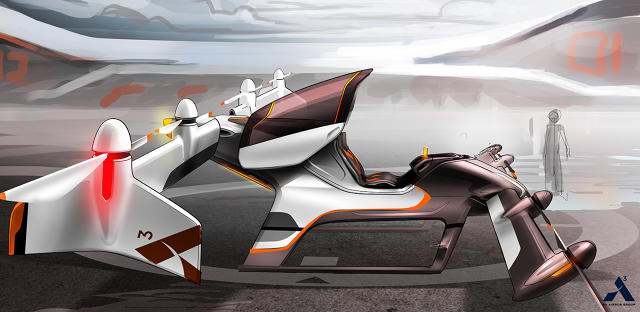
Advances in autonomous cars show that a self-piloted plane is also a possibility, and it’s perhaps less of a stretch. “We’ve had autopilot for a long time,” says Maryanna Saenko. “There are fewer obstacles. You don’t have children running into streets.” A lot more work has gone into managing overall traffic for planes than for cars, she says. Wulff is more circumspect. “I think the technology for a true autonomous plane carrying passengers—I think five years is a bit short,” she says. (Airbus won’t name the companies it’s working with to provide the AI for autonomous control.)
The biggest barrier for craft like the Vahana isn’t the plane itself, but the infrastructure around it, says Wulff. It requires building landing pads throughout urban environments, which may be a hard sell for the people who’d live near them. Without enough places to land, there wont be the economies of scale to take these flights beyond services for the elites. Costs need to get to something on the order of $40 for a 15-minute flight, she says. And although the regulatory process has started, it will be a long haul.
That helps explain why even though Airbus is building the Vahana prototype right now, it doesn’t expect it to lead to a full-blown commercial business for years. “I think to have the aircraft within five years is certainly possible,” says Wulff. “To have a functioning urban air mobility system in five years, I think that’s too soon. I think 10 years is a more likely window.”
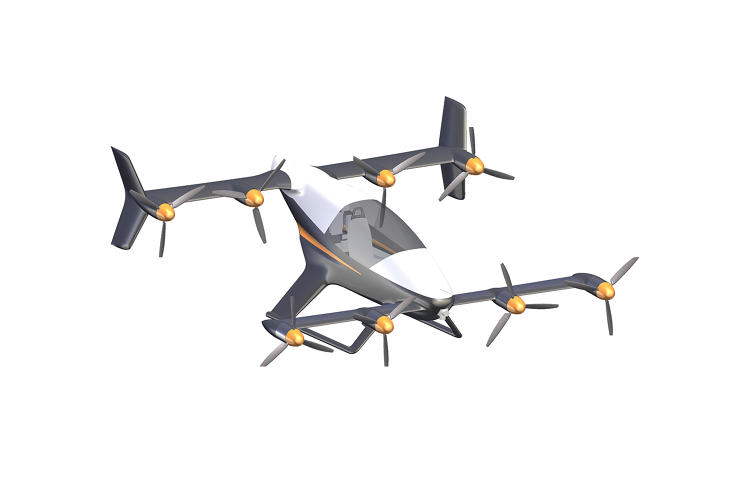

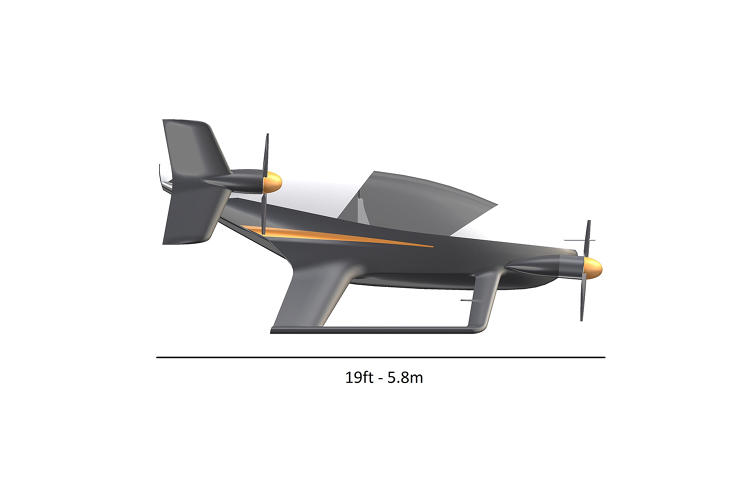
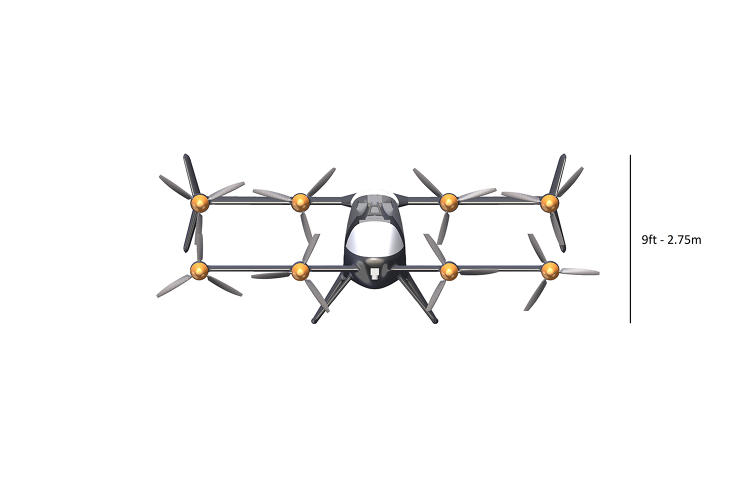
Fast Company , Read Full Story
(43)

